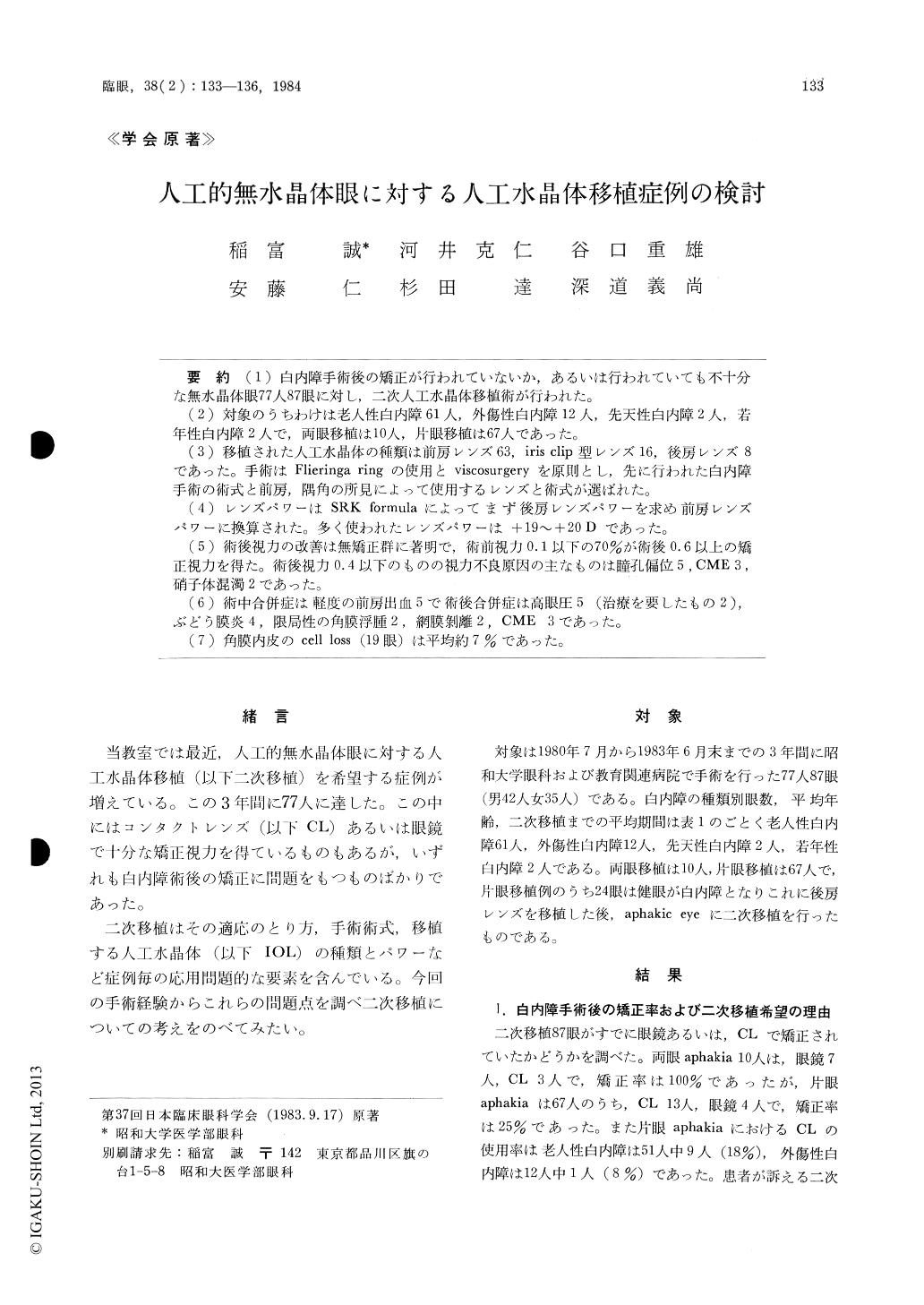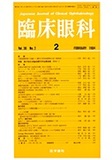Japanese
English
- 有料閲覧
- Abstract 文献概要
- 1ページ目 Look Inside
(1)白内障手術後の矯正が行われていないか,あるいは行われていても不十分な無水晶体眼77人87眼に対し,二次入工水晶体移植術が行われた。
(2)対象のうちわけは老人性白内障61人,外傷性白内障12人,先天性白内障2人,若年性白内障2人で,両眼移植は10人,片眼移植は67人であった。
(3)移植された人工水晶体の種類は前房レンズ63,iris clip型レンズ16,後房レンズ8であった。手術はFlieringa ringの使用とviscosurgeryを原則とし,先に行われた白内障手術の術式と前房,隅角の所見によって使用するレンズと術式が選ばれた。
(4)レンズパワーはSRK formulaによってまず後房レンズパワーを求め前房レンズパワーに換算された。多く使われたレンズパワーは+19〜+20Dであった。
(5)術後視力の改善は無矯正群に著明で,術前視力0.1以下の70%が術後0。6以上の矯正視力を得た。術後視力0.4以下のものの視力不良原因の主なものは瞳孔偏位5,CME 3,硝子体混濁2であった。
(6)術中合併症は軽度の前房出血5で術後合併症は高眼圧5(治療を要したもの2),ぶどう膜炎4,限局性の角膜浮腫2,網膜剥離2,CME 3であった。
(7)角膜内皮のcell loss (19眼)は平均約7%であった。
Secondary intraocular lens implantation was performed in 87 cases of aphakic eyes that had not tolerated correction with contact lens or spectacles. Anterior chamber lenses were implanted in 63 cases. The lens power was calculated from the SRK for-mula to obtain a comfortable binocular vision. In 70% of the non-corrected aphakic eyes, postopera-tive visual acuity improved to more than 0.6 from less than 0.1. Postoperative complications included high intraocular pressure in five cases of which two were treated as primary open angle glaucoma, uveitis in four, retinal detachment in one, CME inthree and others in three.

Copyright © 1984, Igaku-Shoin Ltd. All rights reserved.


